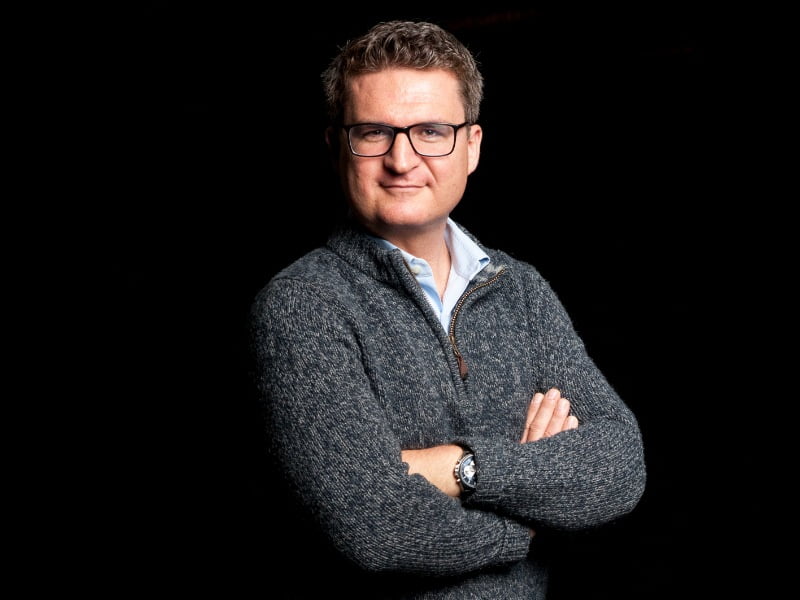Artificial intelligence (AI) represents a fundamental change across society and cannot be treated as a trend that will pass us by in a couple of years, according to Digital Health Cooperative Research Centre (DHCRC) Chief Innovation Officer Dr Stefan Harrer.
Digital health is an area in which AI has some of the most promising applications due to its foundation of evidence-based, data driven processes.
In clinical settings, Dr Harrer says “AI could analyse data and create insights for carers and providers to better diagnose, prognose, treat and manage diseases.”
Dr Harrer sees AI as one of the most groundbreaking technology developments of our times and encourages everyone to have an active role in the discussions around its development.

“This is not something to shy away from, it’s something to be utterly excited about. It’s only just the beginning at this point,” he told InnovationAus.
AI promises healthcare innovation
The uneasiness about the impact of AI is a natural, understandable reaction to new technology.
“It’s a healthy mechanism that ensures technology isn’t getting out of control, and that it’s developed in a way that benefits the whole of humanity,” he said.
But fears that AI would render humans redundant are unfounded. With automated, pre-defined, repetitive tasks that can predictably be executed over and over again, such as gathering data or processing data, AI can be used as an assistive system incorporated into human workflows.
With medical imaging, which has been at the forefront of using assistive AI, it can find patterns of interest in scans, easing the workload on humans.
“AI technology has been getting better and better at analysing images and then recognising patterns of interest in those images,” said Dr Harrer.
“Automatic image analysis has been one of the early applications of AI, and now we begin to see more advanced AI techniques in this field. These technologies are on the cusp of gradually finding their way into the routines of for example radiologists as they examine and analyse medical imagery.”
This is just one example of the potential of AI to augment rather than replace human understanding and analysis.
“The important thing being that AI is not substituting the clinician, the medical expert, in this particular case, but it’s actually enhancing their capabilities to make better informed, faster decisions,” he said.
“AI does not replace the human decision maker, but AI plus the human decision maker often creates a superior combination that outperforms either the human or the AI making decisions separately by themselves.”
Dr Harrer points to electronic medical record keeping as another promising health application for AI. Natural language processing, a type of AI that analyses written or spoken language, could be used to automatically analyse records such as medical reports and medical research papers to extract and present relevant pieces of information.
This would free clinicians from the time-consuming task of reviewing these records themselves.
“Clinicians have to keep these records up to date and extract information out of them. AI could ease the burden on the clinician from having to deal with these repetitive tasks, freeing them up to help patients more and develop new ways of treatment and care models,” he said.
“These assistive technologies relieve clinicians from some of the more tedious tasks dealing with repetitive data curation and analysis.”
Technologists have a mandate to broaden the message
Dr Harrer believes that scientists and technologists have a duty to promote and explain the potential of AI in a transparent, accessible and factual manner.
“Neither fear-mongering nor hyping AI is helpful. AI is a complex breakthrough technology that has triggered a lot of attention across our society.
We scientists have the responsibility to create awareness for the technical opportunities as well as the ethical aspects of developing AI technology responsibly.
No one needs to be afraid of AI – what we should be afraid of is not knowing about the game-changing opportunities that lie in responsibly developing and using AI technology to solve some of the most pressing problems of humanity,” he said.
If people have questions about life-changing new technology, and Dr Harrer is excited about how many people do have such questions about AI, it’s up to scientists to provide answers.
“It’s very important for experts in the field to communicate properly, honestly and transparently using scientific rigour,” he said.
“We want to build trust because we want AI to be adapted and used for good. That trust in AI is built by communicating, explaining, educating and spreading the enthusiasm we have from already experiencing this technology’s potential with the broader public,” he added.
“This approach should be a mandate for everyone who is working on breakthrough technologies.”
This story is part of DHCRC’s category award sponsorship of the InnovationAus 2021 Awards for Excellence.
Do you know more? Contact James Riley via Email.
